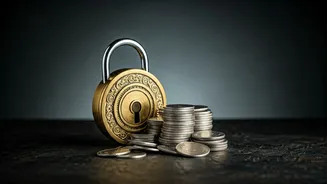Eligibility and Rules
The Employees' Provident Fund (EPF) Act outlines the conditions for withdrawing your PF and EPS. Generally, you can withdraw the full PF balance if you're
unemployed for 60 days or more before turning 58. This includes your and your employer's contributions plus interest. You may also be eligible for EPS funds, depending on your service duration. If you leave your job before 58, you can withdraw the full PF balance (and EPS if applicable) if you are unemployed for two months. If unemployed for one month, you can withdraw 75% of your EPF, and the remainder after two months. The rules for EPS lump-sum withdrawal depend on your service period.
Merging Your Accounts
Before starting the withdrawal process, it’s beneficial to merge all your previous PF accounts into one. This consolidation is important, as both your current and previous service periods are considered. Merging your accounts simplifies the process and ensures that all your contributions are accounted for. This action is critical for an organized and easy withdrawal experience, so it is recommended to merge all previous PF accounts for a simplified withdrawal experience.
The Withdrawal Process
The EPFO has introduced a 'composite form' to manage withdrawals, transfers, and advances. Having your Aadhaar number is useful for a smoother process. If your UAN is linked to your Aadhaar, you can apply online through the Member e-Sewa portal. If you don't have Aadhaar, or your UAN isn't linked, you'll need to visit your EPFO office. Linking your UAN to Aadhaar can be done through various methods, making the process simpler. You can initiate withdrawals with or without your Aadhaar card.
Withdrawal Methods Without Aadhaar
If you don't have an Aadhaar number, you can still use a specific form to withdraw your PF. You'll need to visit your regional EPFO office and submit the form with a cancelled cheque. No extra documents are needed with the form itself. You must provide your Permanent Account Number (PAN) if you have worked for less than five years. Additionally, include two copies of Form 15G/15H, if applicable. If you do not have a UAN, you can mention only your PF account number.
Withdrawing with Aadhaar
When your UAN is linked to your Aadhaar, the withdrawal claim can be submitted online using the Member e-Sewa Portal, or by visiting the EPFO office with the filled form. Ensure your UAN is activated before logging into your account on the EPFO portal. If you plan to visit the EPFO office, make sure you've submitted complete details in Form 11 (New) to your employer, and have your Aadhaar and bank account details available on the UAN portal. To apply online, log into your account, go to online services and choose the claim option.
Withdrawal in Different Scenarios
The process of withdrawing PF and EPS depends on various situations. These situations include: withdrawing PF balance plus EPS amount for less than 10 years of service, withdrawing both amounts if the service period is under 10 years and by choosing the pension withdrawal option. Another case includes withdrawing PF balance plus EPS amount for over 10 years of service. If you have over 10 years of service, the EPS amount cannot be withdrawn. You can also opt for reduced pension after the age of 50. Finally, there's withdrawing PF balance and full pension after turning 58.
When to Withdraw
It's often recommended to transfer your PF balance when changing jobs, acting as a form of forced savings. For those still employed, transferring to a new employer is often advised. However, if you start your own business, you can transfer the entire EPF balance to the National Pension Scheme. If you choose not to touch your EPF, remember that interest earned after leaving your job will be taxable. To avoid this, either transfer the balance or withdraw the funds as soon as possible after leaving your job.













